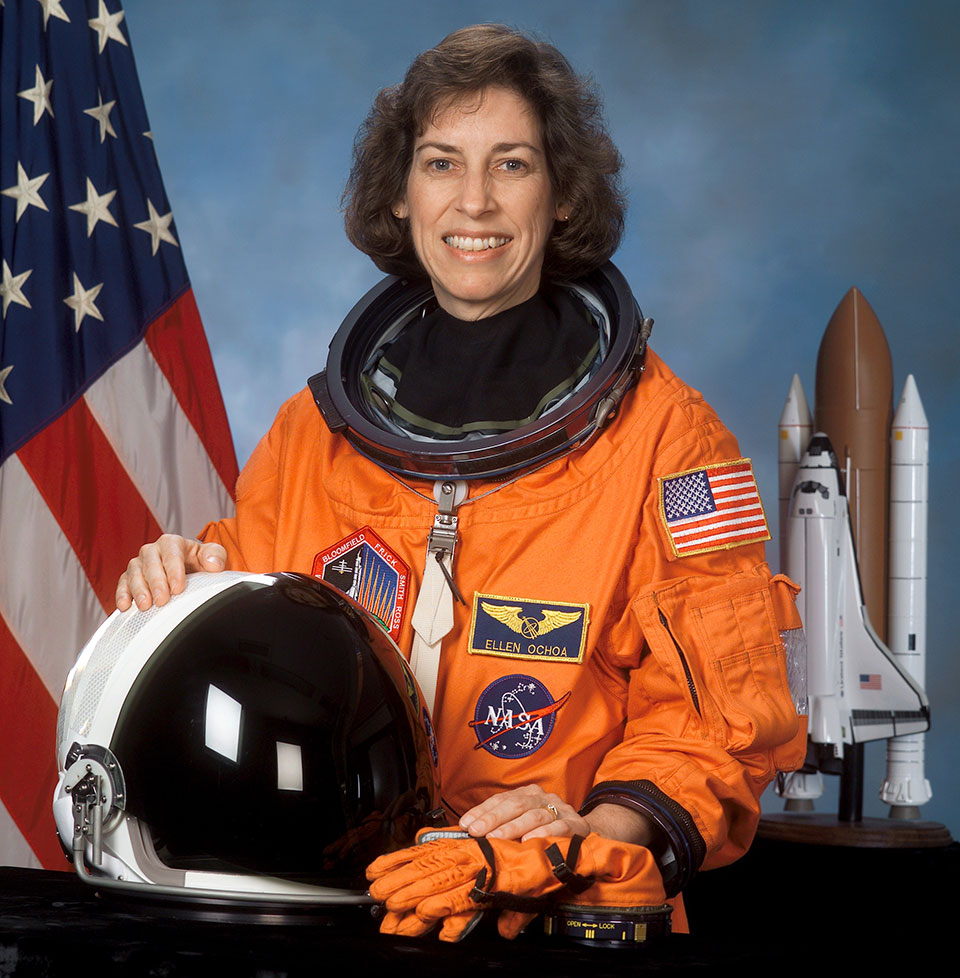An Exclusive Interview with Former NASA Astronaut and First Hispanic Woman in Space, Ellen Ochoa

Q: With nearly 1000 hours in space over four missions, did you ever feel that your presence on board was undervalued because you were a woman or a Latina?
EO: Our crews needed to work closely together to accomplish our missions. I spent about a year in training for each of my flights, so the crew got to know each other and our roles well.
I felt my crew mates appreciated what I brought to the team, just as I did with them.
On my first two flights, I was in charge of the science instruments on my shift (in fact, I was in charge of the science payload overall as payload commander on my second flight), as well as the prime robotic arm operator. During both of those missions, we used the arm to deploy a science satellite into space as a free flyer, then we rendezvoused with it a few days later and used the arm to grapple it and berth it back in the payload bay.
My second two flights were part of assembling the International Space Station; I was again the prime robotic arm operator (shuttle arm in one case, station arm on my final flight), moving spacewalking crew members around and attaching the first piece of the truss structure to the station. I also served as the flight engineer, working with the commander and pilot on all the dynamic phases of flight, including launch, rendezvous and docking with ISS, and landing. All these roles were incredibly interesting and challenging tasks that I enjoyed working on with my crew mates to accomplish successfully.
Q: Of those four missions, is there one that you feel was especially important, and why?
EO: They all had important objectives. My first two flights were studying the problem of the ozone hole and ozone depletion — a global issue with important health ramifications for people on Earth. The under-standing of the chemistry behind ozone depletion, especially by the byproducts of chlorofluorocarbons, had recently won scientists the Nobel Prize, and now we were part of monitoring those constituents in the atmosphere as well as measuring the amount of light coming from the sun in different wavelengths. Even today, more than 30 years later, the atmosphere is still recovering, and the size of the ozone hole is tracked every year.
One of the scientists who had an instrument on board said that he wished we could stay up longer (all my flights were 9, 10, or 11 days, which was pretty typical for shuttle flights then), and as it turned out, NASA was working on an International Space Station (ISS) to do just that. I worked on the ground with our in-ternational partners in developing crew operational concepts, as well as on protocols about assigning and training multinational crews. I then got to be part of the first shuttle crew to dock to the new station, pri-or to any crews living on board, and to return three years later to initiate the second phase of assembly by starting to build the truss on which the four large solar arrays are attached.
Today, the ISS has been continuously inhabited for over 23 years, and more than 1500 scientific investigations have been carried out.
To read more of our exclusive interview with Ellen Ochoa, click here.

